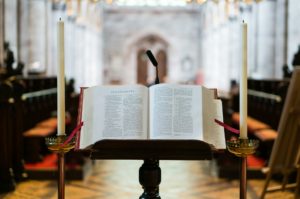
Late one evening, a women knocked at Father Damien de Veuster’s door. Nervously, she whispered a warning into his ear then fled into the darkness. What she told him was sobering: that night, pagan incantation rites against his life were being conducted in a burial cave. Yet undaunted by the threat, he walked for an hour to reach the cave. When he arrived, 30 men were gathered around a priest holding a voodoo doll of him. So Damien rushed in, tore the doll to shreds, and stomped on its remains before denouncing the men for their sin. Then he walked out of the cave untouched as they stood in stunned silence.1
Born Jozef de Veuster, Father Damien left his native Belgium in 1863 at age 23 to sail for Hawaii. During his first pastorate there, he acquired a reputation for hard work, building two church buildings with his own hands. Then, despite his youth, he volunteered to move to a much larger parish when its pastor became ill. Over three decades in Hawaii, personal courage became a hallmark of his ministry.2
Once, he was riding a horse along the shore when he spotted a ship’s lifeboat carrying what appeared to be an unmoving body. So, ignoring sharks, he swam to the boat and saved eight sailors who had been adrift for more than a week after a fire at sea. On another occasion, he expended such effort to make a pastoral visit that he collapsed from exhaustion and dehydration upon arriving. The journey involved riding a horse, walking, swimming, and climbing mountains on his hands and knees, sometimes waist deep in mud.3
Such bravery eventually led to Damien’s greatest sacrifice. In 1873 he volunteered to minister in Kalaupapa, a leper colony on the island of Molokai. Because of the stigma attached to leprosy, doctors refused to treat its victims and ostracized them to die alone. The disease was grotesque. It caused terrible skin sores, nerve damage, and gradual debilitation.4 In Kalaupapa villagers were dying at a rate of one per day and being buried in shallow graves where wild dogs and pigs mangled their remains.5 Predictably, the physical conditions led to spiritual hopelessness. At night the lepers got loudly drunk and engaged in sexual immorality. But Damien changed all that.
On his first full day he began digging six-foot graves and building coffins to provide dignified burials.6 He also located a clean water source and channeled it to villagers with iron pipes. To replace primitive huts, he built 300 houses. Further, he erected schools for children and built a chapel every year for the first ten years of his ministry there. Most remarkably, however, he embraced the people without fear of their disease. He hugged them, shared eating utensils with them, and bandaged their wounds. And every night, he ate dinner with 20 villagers. They described the gatherings with a Hawaiian word meaning “the time of peace between night and day.”7 Damien’s ministry ended only when he contracted leprosy and died at age 49. For his efforts, he was canonized by Pope Benedict XVI in 2009.8
Though most pastors today are not faced with voodoo dolls and leprosy, they do minister amid daunting challenges and human needs. Indeed, many address those needs with valor. Yet to carry out their calling most effectively, God’s messengers must, like Damien, constantly look for the next stronghold to topple in the name of Christ.
Footnotes:
1 James M. Thunder, “The First Ironman of Hawaii,” American Spectator Website, October 9, 2009,
2 Ibid.
3 Ibid.
4 “‘Father Damien’ among New Vatican Saints,” CNN Website, October 12,2009
5 Thunder.
6 Eventually his efforts yielded 2,000 graves and coffins.
7 Ibid.
8 “‘Father Damien’ among New Vatican Saints.”




